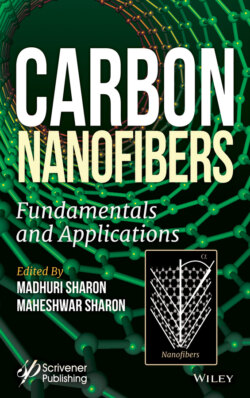Читать книгу Carbon Nanofibers - Группа авторов - Страница 34
1.4 Properties of CNF and Its Composites
ОглавлениеElectrical conductivity in CNF/polymer composites depends upon the nature of the network and their alignment in the matrix. Therefore, for good electrical conductivity a good fiber dispersion and the continuation of the network of carbon nanofibers is necessary. Also, by controlling the loading amount of CNF in the composite different electrical resistivity values can be achieved. CNF/polymer composite can increase the tensile strength (gain of 50 to around 300%), compression strength (50–100%), Young’s modulus (almost 100%), inter-laminar shear strength (with 1% CNF increases in the range of 20–50%), fracture toughness (with 1% CNF increases in the range of 30–50%), and vibration damping of the base polymer. These improvements depend upon the nature of polymer, extent of dispersion, etc. [9–15]. Thermal conductivity of CNF with 20 wt% epoxy resin has been observed to increase from 0.2 W/m-K to 2.8 W/m-K [15]. CNF composite with thermoplastic material is found to retard fire properties like delay in burning when exposed to flame and slow heat transmission [16, 17]. Polymeric composites with carbon nanofibers have shown substantially lower coefficients of thermal expansion as compared to graphite. Details of CNF and its composites are presented in Chapter 4 of this book.
